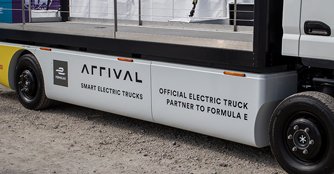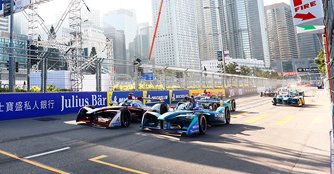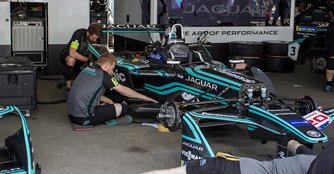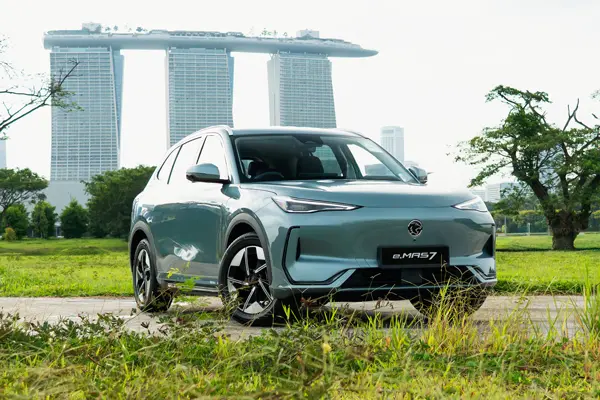Formula E races ahead into our automotive future
05 Dec 2017|6,948 views
The FIA Formula E Championship is a racing series that began in 2014, and comprises only electric-powered cars. Now in its fourth season, it's a series that has grown year on year, in terms of teams, scope and relevance.
Sitting trackside at the Hong Kong ePrix to catch the first two races of the season, I ponder about the role that Formula E has in defining and shaping our automotive future.
Pure racing
It's easy to dismiss Formula E as yet another racing series for big brands with money to throw around. But from its inception, the racing series has been clear in defining its function and purpose. From the racing regulations to the teams involved, it's clear that Formula E wants to do things differently.
And it appears the automotive world is steadily buying into it. More brands and big name drivers are getting involved with Formula E. From a motorsport perspective, Formula E actually boasts the most number of manufacturers, with a total of 10 different manufacturers involved.
It's also evident from the big-name drivers that the racing is very much at the heart of this endeavour. The weekend double header in Hong Kong served to highlight this, with both races chaotic, eventful and exciting events. The first race of the season was a chaotic mess, with a massive first lap pileup causing a red flag. Once the race restarted, there was a flurry of racing action to be had up and down the field, with drivers jostling for position and attempting to out race, out manoeuvre and out brake each other. And in the second race, the pole sitter spun at the very first corner, while Edoardo Mortara led for most of the race only to spin out on his second last lap.
So yes, it's undeniable that Formula E is a legitimately exciting race series, with a high quality of drivers. As Nelson Piquet Jr. told us, "At the end of the day it's not that different from any other race series. It's 20 drivers in 20 cars on one track, and whoever goes the fastest wins."

However, the approach towards motorsport for Formula E has also always been clearly defined in terms of sustainability and involvement. Of course, as the world's first electric racing series, it's clear the Formula E wants to emphasise the use of sustainable electric energy.
However, it's more than just the race cars. There are clear examples of the series' embracing of clean, green tech, ranging from the use of the BMW i8 as its safety car to its partnership with Arrival, its official electric truck partner. The tyres used are hybrids specially designed by Michelin, and are recycled at the end of the day.
Year on year, efforts have also been made to reduce the carbon impact that the racing series has, not just on race day itself, but throughout the whole logistical process - everything from shipping to charging. By season five, Formula E aims to have the entire race powered by renewable energy sources.
At the same time, Formula E also actively emphasises the sense of involvement, and of bringing the event to the masses. This is why the races all take place in key city centres, such as Hong Kong, where people can be right in the midst of the action.

These include a chance to get up close and personal with the Panasonic Jaguar Racing I-TYPE 2 race car and other electric vehicles from various manufacturers, live musical performances, racing simulators, as well as other booths run by various partners technical or otherwise. There's an atmosphere of festivity and bustling activity.
Fans can get directly involved in the race as well. Through a voting system dubbed 'FanBoost', fans can vote for their favourite drivers who will be able to utilise an additional power boost during the race.
According to Panasonic Jaguar Racing Team Director James Barclay, Formula E occupies a different sort of niche from something like Formula One. Formula E offers a sense of relatability, from the manufacturers involved to the technologies used, which are all developed with the intent of making them available in road cars.
What will be will be
The reality is that Formula E is here to stay, whether diehard petrolheads like it or not. With its embracing of new, modern yet relevant technologies, Formula E is a race series that very much looks to the future.
And the impact of Formula E cannot be denied. Manufacturers such as Jaguar are using Formula E specifically to test and develop their electric technologies to be applied to their future road cars. As James Barclay tells us, "Formula E is about taking technologies from the track and apply them to road cars. And Formula E is also about developing pioneering technologies."
It is this pioneering spirit that will very much define and shape our automotive future, from technologies being tested on the cars here, even to the way we design and define events, racing or otherwise.
Ultimately, it's about wanting to do things a different way, and about finding a better, more sustainable way to do so. This, arguably, is Formula E's greatest impact, and we can expect only bigger and better things to come.
The FIA Formula E Championship is a racing series that began in 2014, and comprises only electric-powered cars. Now in its fourth season, it's a series that has grown year on year, in terms of teams, scope and relevance.
Sitting trackside at the Hong Kong ePrix to catch the first two races of the season, I ponder about the role that Formula E has in defining and shaping our automotive future.
Pure racing
It's easy to dismiss Formula E as yet another racing series for big brands with money to throw around. But from its inception, the racing series has been clear in defining its function and purpose. From the racing regulations to the teams involved, it's clear that Formula E wants to do things differently.
And it appears the automotive world is steadily buying into it. More brands and big name drivers are getting involved with Formula E. From a motorsport perspective, Formula E actually boasts the most number of manufacturers, with a total of 10 different manufacturers involved.
It's also evident from the big-name drivers that the racing is very much at the heart of this endeavour. The weekend double header in Hong Kong served to highlight this, with both races chaotic, eventful and exciting events. The first race of the season was a chaotic mess, with a massive first lap pileup causing a red flag. Once the race restarted, there was a flurry of racing action to be had up and down the field, with drivers jostling for position and attempting to out race, out manoeuvre and out brake each other. And in the second race, the pole sitter spun at the very first corner, while Edoardo Mortara led for most of the race only to spin out on his second last lap.
So yes, it's undeniable that Formula E is a legitimately exciting race series, with a high quality of drivers. As Nelson Piquet Jr. told us, "At the end of the day it's not that different from any other race series. It's 20 drivers in 20 cars on one track, and whoever goes the fastest wins."

Sustainable involvement
However, the approach towards motorsport for Formula E has also always been clearly defined in terms of sustainability and involvement. Of course, as the world's first electric racing series, it's clear the Formula E wants to emphasise the use of sustainable electric energy.
However, it's more than just the race cars. There are clear examples of the series' embracing of clean, green tech, ranging from the use of the BMW i8 as its safety car to its partnership with Arrival, its official electric truck partner. The tyres used are hybrids specially designed by Michelin, and are recycled at the end of the day.
Year on year, efforts have also been made to reduce the carbon impact that the racing series has, not just on race day itself, but throughout the whole logistical process - everything from shipping to charging. By season five, Formula E aims to have the entire race powered by renewable energy sources.
At the same time, Formula E also actively emphasises the sense of involvement, and of bringing the event to the masses. This is why the races all take place in key city centres, such as Hong Kong, where people can be right in the midst of the action.

These include a chance to get up close and personal with the Panasonic Jaguar Racing I-TYPE 2 race car and other electric vehicles from various manufacturers, live musical performances, racing simulators, as well as other booths run by various partners technical or otherwise. There's an atmosphere of festivity and bustling activity.
Fans can get directly involved in the race as well. Through a voting system dubbed 'FanBoost', fans can vote for their favourite drivers who will be able to utilise an additional power boost during the race.
According to Panasonic Jaguar Racing Team Director James Barclay, Formula E occupies a different sort of niche from something like Formula One. Formula E offers a sense of relatability, from the manufacturers involved to the technologies used, which are all developed with the intent of making them available in road cars.
What will be will be
The reality is that Formula E is here to stay, whether diehard petrolheads like it or not. With its embracing of new, modern yet relevant technologies, Formula E is a race series that very much looks to the future.
And the impact of Formula E cannot be denied. Manufacturers such as Jaguar are using Formula E specifically to test and develop their electric technologies to be applied to their future road cars. As James Barclay tells us, "Formula E is about taking technologies from the track and apply them to road cars. And Formula E is also about developing pioneering technologies."
It is this pioneering spirit that will very much define and shape our automotive future, from technologies being tested on the cars here, even to the way we design and define events, racing or otherwise.
Ultimately, it's about wanting to do things a different way, and about finding a better, more sustainable way to do so. This, arguably, is Formula E's greatest impact, and we can expect only bigger and better things to come.
Thank You For Your Subscription.








































